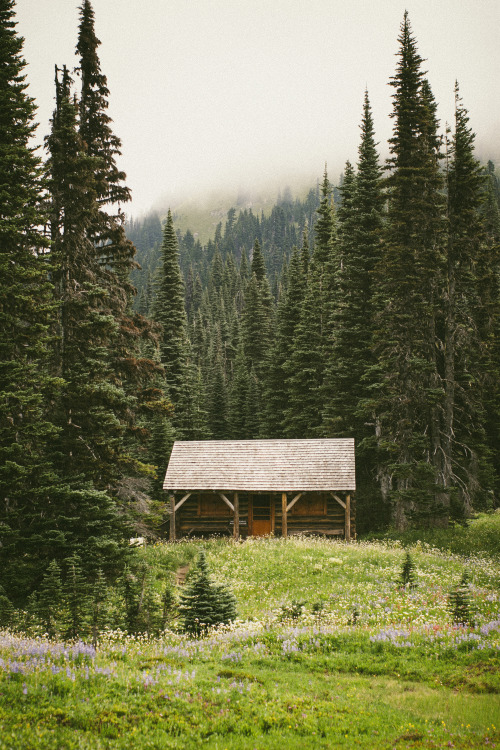
Ranger cabin on the Wonderland Trail near Indian Henry’s hunting ground in Mount Rainier, Washington.
Contributed by Catherine Johnson. More photos here.

Ranger cabin on the Wonderland Trail near Indian Henry’s hunting ground in Mount Rainier, Washington.
Contributed by Catherine Johnson. More photos here.
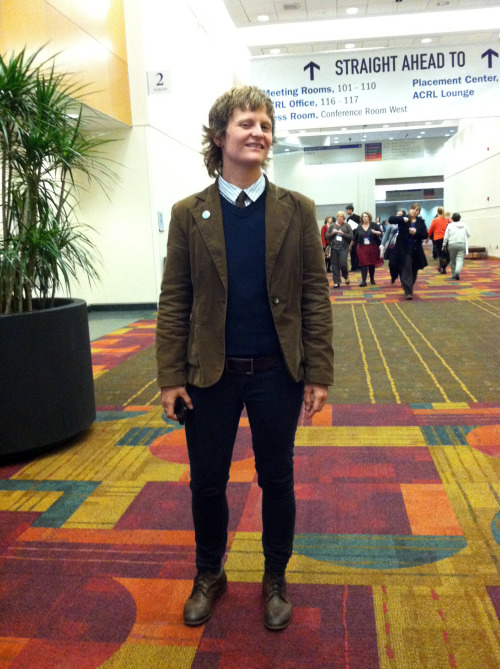
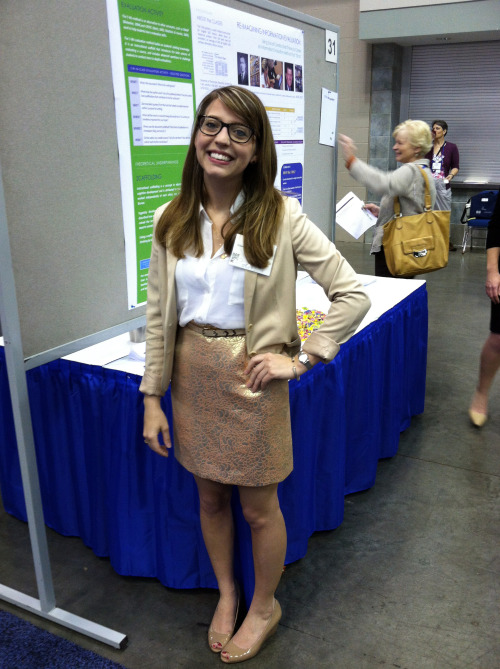
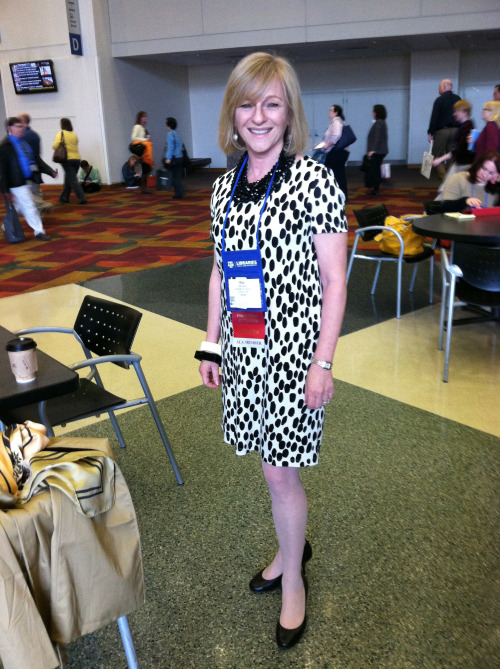
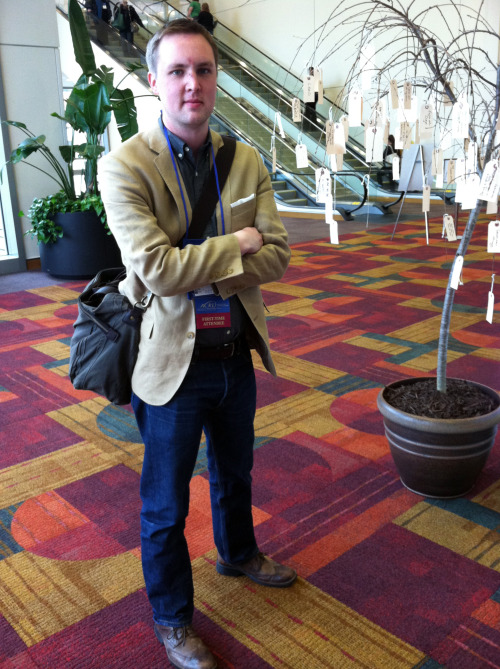
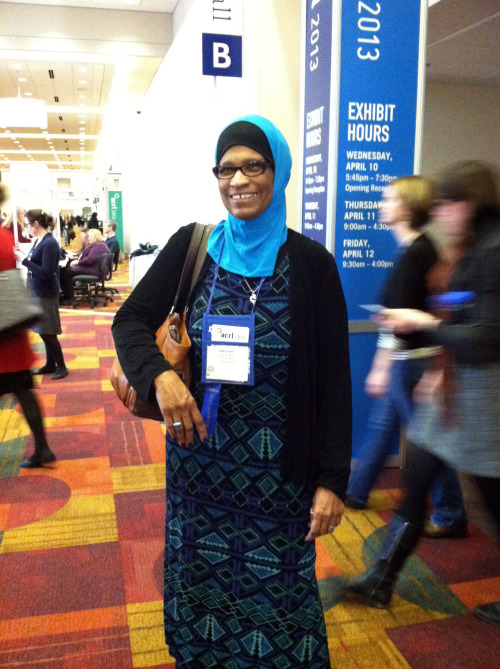

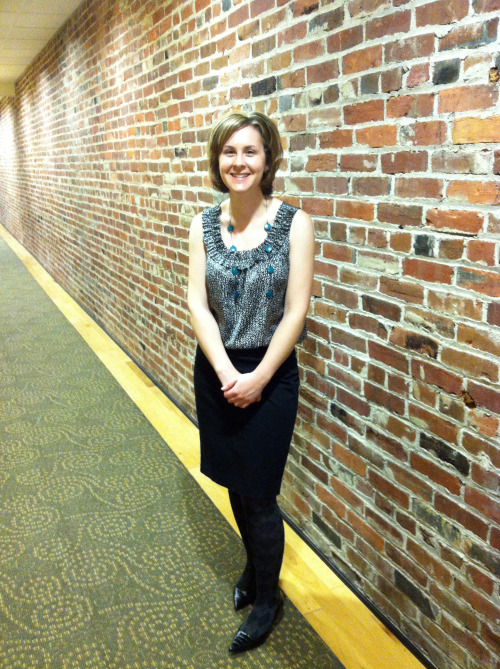
#ACRL2013, you were soooooooo good looking! We saw tons of creative fashions at the conference in Indianapolis last week. Below are just a few, but we encourage you to submit your own to be highlighted here at Librarian Wardrobe. Thanks to everyone who put up with our awkward interruptions and also to Lindsey Rae (Technology and Public Services Librarian at Champlain College) for her iPhone photography skills.
We caught up with Char Booth just before she took the stage to co-present “Love your library”: building goodwill from the inside out and the outside in. When we asked her about her choice of clothing she had quite a profound response: “Ties make me… feel.” Well, the presentation made us feel (awesome), so be sure to check out the handout and tweets at #makerlib.
Rachel Gammons, Learning Design Librarian at Millersville University, took a break from co-presenting her poster to talk with us about her choice of clothing: “My boyfriend told me I couldn’t pull off gold lamé for the conference, so I set out to prove him wrong.” Success!
Rita was spotted from across the Convention Center food court wearing an amazing short khaki trench-coat and silk scarf. She looked so fashionable that my friends bet me she wasn’t a librarian at all. tl;dr I won drinks that evening. Ladies and gentlemen, meet Rita Vine, Faculty Liaison & Information Literacy Coordinator at University of Toronto Robarts Library: “This is how I dress for work everyday.”
It was the subtle details that caught our attention when interviewing Michael Greenlee, Reference, Instruction, and Web Services Librarian at University of Tulsa. Along with his unbuttoned chambray shirt and comfortable brown oxfords, he takes pride in his linen pocket square: “I like it because it is something professional men at one time wouldn’t be seen without.”
D. Waheedah Bilal is an Assistant Librarian, Liberal Arts Team Leader, and Liaison for English at Indiana University-Purdue University Library and one of the only locals we caught up with over the conference. Initially drawn to her blue color-palette (nail polish included), we concluded that she truly rocked the headscarf. Waheedah cited “comfort” as the reason she selected this ensemble for the conference.
Bold colors were definitely a conference clothing theme, and Cat Silvers from Florida State University Strozier Library was doing it right! She had this to say about her wardrobe: “I like bright and fun colors.”
Melissa Gold, Science Librarian at Millersville University, co-presented her contributed paper bright and early at 8 AM on Wednesday morning. She was dressed to the nines in a pencil skirt with argyle tights: “They make me feel powerful!”
(Thanks to @edorney!!)
Maybe even the best things.

As long as they're kept in sunny spots, they only need to be watered about once a week in the summer and once a month in the winter.
Source: instagram.com

Source: pinterest.com

Source: design-seeds.com

'Sup Fibonacci.
Source: instagram.com

Joseph Gordon-Levitt stars in his directorial debut, Don Jon,which centers on the life of a "porn addict" Jersey boy named Jon Martello. Though plenty of people will likely flock to a film that centers on two sexy stars and a porn addiction, Don Jon attempts to deconstruct the ways in which rigid notions of masculinity and femininity are damaging.
In the film, Jon Martello has his routine down pat: GTL (Gym, Tan, Laundry), going to the club with his boys to pick up ladies, then heading to church with his family every Sunday morning to where he can atone for his sins. Despite getting laid constantly, Jon's unsatisfied. His not-so-secret satisfaction? Porn. For Jon, porn is better than sex—he watches clips upon clips of naked bodies writhing around until they all blur into that one moment of satisfaction multiple times a day, day and even after having sex with the many of women he picks up.
Jon's routine faces upheaval when Barbara—a hilarious Scarlett Johansson who Jon's buddies rate a '10'—walks into the club and steals Jon's heart.In the course of their relationship, and Jon's new friendship with free-spirited community college classmate Esther(the always terrific Julianne Moore), the tanned protagonist starts to challenge his strictly gendered worldview.
Jon's father, Jon Sr. (Tony Danza), portrays an example of ideal masculinity: a gold-chain strewn, veiny necked, misogynistic nightmare. But there's a disconnect between the father and son; Jon isn't completely buying his father's ideas despite the fact that the pair wear identical uniforms of white tank tops and gold chains. While Jon's masculinity isn't necessarily more nuanced or progressive than his father's, he has some traits that both his is father and new girlfriend deem too girly. Barbara gets pissed over Jon's plans to buy some Swiffer products. In products, in a bizarre scene, she says saying it's embarrassing for her man to be buying cleaning supplies because he should have someone doing that for him.
Gordon-Levitt uses Don Jon to explore objectification in all forms: how societal expectations for our gendered behavior can leave us unable to connect to others on an individual level. He has been very open about the theme of objectification in the film, responding recently on Twitter —to to the obnoxious Esquire editor who said that women are "there to be beautiful objects"—that objects," that this is what Don Jon is all about. In the post-film Q&A at SXSW, co-star Brie Larson mentioned how our society deems beautiful women as public property for anyone to comment upon.
In Don Jon, this objectification impacts our personal sexualities in very negative ways. For Jon, it's his inability to be able to connect on an emotional or even sexual level with another person beyond his connection with porn. And for Barbara, it's about intricately tying her sexuality to what she sees in romantic comedies that are as unrealistic as Jon's porn.The film places importance on true, emotional human connections linked to sexuality.
While that's a good message to leave on and I applaud Gordon-Levitt's feminist calling-out calling out of objectification and limiting gender roles, especially in his directorial debut, I ultimately found the film to have has a limited view of sexuality. It suggests that the best sex happens when the two people are emotionally connected, which may be true in some cases but not in all.It also establishes itself as pretty anti-porn but doesn't widen the porn discussion to anything that isn't seen as mainstream porn. Don Jon keeps itself very much rooted in the types of clips (and they show a lot of clips) that could be used as examples in a "pornification of American culture" think piece. But there's no discussion of porn that exists outside of that, like feminist, woman-made, sex-positive porn. Jon's classmate, Esther, catches Jon watching porn on his phone in class and gives him a seventies-era Danish erotic film—but it strangely disappears from the film, never mentioned again. The film ends leaving the audience with the assumption that there isn't necessarily room for porn within a healthy sexuality.
Despite a rather limiting viewpoint on porn and what constitutes healthy sexuality, Don Jon is an enjoyable and very funny deconstruction of the ways in which we objectify each other and ourselves. By bringing up issues of sexuality, porn, gender roles and objectification in his directorial debut, debut Gordon-Levitt will certainly open up discussion to a broader audience. And in case you were wondering, during the post-film Q&A, when asked if he was a feminist, Gordon-Levitt responded to a delighted crowd with a resounding, "Absolutely."